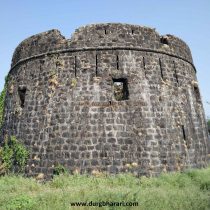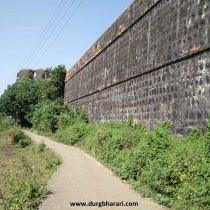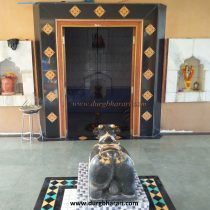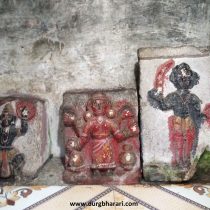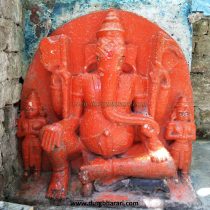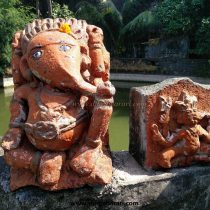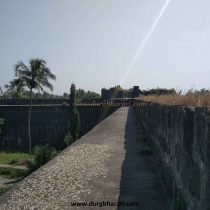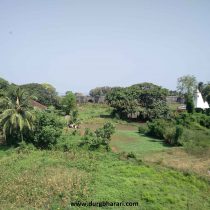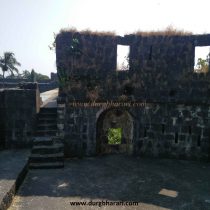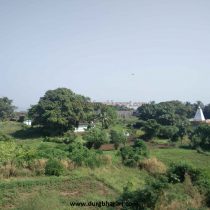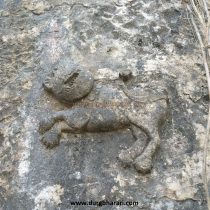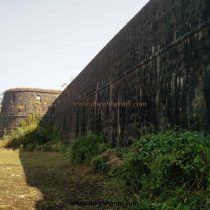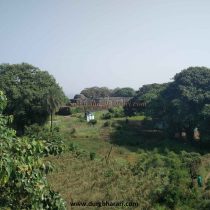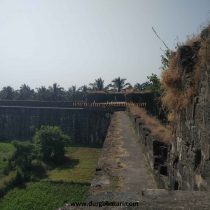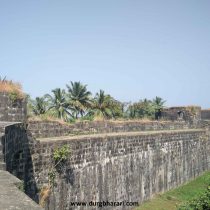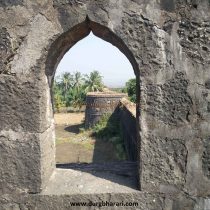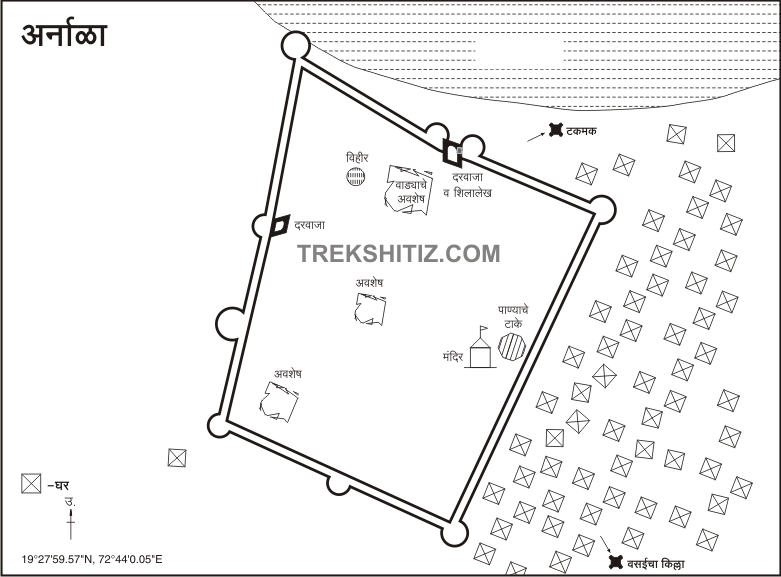ARNALA
TYPE : SEA FORT
DISTRICT : PALGHAR
HEIGHT : 0
GRADE : EASY
Arnala village is approximately about 10 km from Virar railway station on the Mumbai Suburban Railway of the Western Railways. S.T and rickshaw services are available to reach the arnala village from the station. Arriving at Arnala village, one can reach Arnala fort on a small boat from the nearby Arnala beach. These boat services are available from 6.00 am to 12.30 pm and from 4.00 pm to 7.00 pm. There is no jetty for a boat to stop on the island, so you have to walk to the shore on both sides. The fort is located northwest of Arnala Island. The Vaitarna river in the North Konkan meets the sea near the fort, so from here one could keep an eye on the entire region of the creek from this water fort.
...
Vasai is the strongest and the biggest fort in the North Konkan, followed by Arnala. After the boat lands on Arnala Island in ten minutes, a round-shaped Hanumanth bastion on the left side of the fort catches your eye while the main fort is on the right-hand side. To reach both places from the boat stops you have to walk for five to seven minutes. This strong bastion is one independent fort, is known as 'Hanumanth Buruj’. It is convenient to see Hanumant bastion first and then go to the main fort. This bastion has only one small door but it is now partially buried in the sand. As a result, the way to climb through it is now closed. It is possible to climb the bastion by hanging the branches of the banyan tree growing on one side of the bastion. In the small temple in front of this bastion is an ancient idol of a phantom. The construction of the bastion outside the fort was the style by the Portuguese but this bastion was reconstructed and repaired by the Marathas as well. The Marathas had realized while fighting the Portuguese that if they had guns and ammunition, such a lone bastion could function as a small fort. Therefore, recognizing the importance of this bastion, it was repaired. During the Peshwa period, the Marathas do not seem to have built a bastion on their own. One of the reasons may be the dependence on guns and ammunition. Two of the features of Arnala Fort stand out. The first feature is the lone bastion outside the fort to the south and the second is the dome on the main entrance. The entrance of the Arnala fort is near the shore. The Arnala Fort is square, with a 30 to 35 feet high fortification and is so wide that a bullock cart can easily pass through it. The area of the fort is about 4 hectares and a total of ten bastions in the ramparts are still standing. Rooms are also made in these bastions & ramparts. There is a stairway to get there. Nine of these bastions are round in shape and one is square. Yashwant Buruj, Bhavani Buruj, Ganesh Buruj, Vetal Buruj are the names of these bastions and Ganesh Buruj is an important bastion of the fort. There is an entrance in this bastion and a barrack for soldiers to stay under the bastion. There are three doors in this Ganesh Buruj. The fort has a total of three gates, the main entrance is on the northern side. There are two bastions on either side of the entrance. The arch of the doorway is beautifully carved with floral ornaments and the sides are carved images of elephants and birds with flower garlands. The architecture of the fort is entirely Maratha style and an inscription of the great Bajirao Peshwa is engraved on the upper part of the arch giving information about the fort. After entering through the entrance, the dome has beautiful carvings and there are guard porches inside. There is another door inside these porches and from here you enter the fort. There are wide steps next to the entrance and there is also a hidden path. Sitting on a hummock above the main entrance, one can see the entire interior of the fort. This hummock is the place of the fort's flag.The ramparts are lined with barrages of guns and artillery, and there are rooms for soldiers and also toilets in the base of the fort. Mango, Palm, coconut, and Tamarind trees can be seen throughout the fort. Walking around the fort from the strong ramparts of the fort, one can see the far region. Inside the fort are the temples of Trimbakeshwar and Bhavani Mata. There is an octagonal pond of beautiful construction in front of the temple of Trimbakeshwar Mahadev. There are stone steps to descend into the pond. The water in the pond is green and unclean although the construction of the pond is very beautiful. There is a small temple on the east bank near this temple. Nityananda Maharaj's paduka can be seen in it. The fort also has a dargah and two tombs. Remains of militants mansion, barn, and other structures can be seen in the fort. Apart from this, there are five-six freshwater wells in the fort. A Datta Temple has recently been built near the rampart. The Archaeological Survey of India has started repair work on the ruined part of the fort. Around the fort, there are three to four thousand Koli communities. Usually, fishing is the main occupation of the Koli community but agriculture is also one of the occupations on this island. On the way out of the main gate of the fort, there is a temple of Goddess Kalika. A hero stone and a cannon can be seen in the temple premises. It takes about two or two and a half hours to see the entire fort. The Government of India has declared this fort as National Protected Monument. The island of Arnala, surrounded by water on all four sides, was annexed by Sultan Mahmud Begda of Gujarat. In 1516, he built a small fort. According to Shridatta Raut, a historian from Vasai and head of the Vasai expedition, the fort was built entirely by Marathas. Malik Tughan, a subedar of Gujarat, used Arnala Island to monitor maritime traffic and collect dues. The fort was conquered by the Portuguese in 1530. In English sources, the island is called Cow’s Island. After nearly 200 years of Portuguese rule, the fort came under the control of the Marathas in 1737 and was built by Bajirao I. The authentic evidence that the fort was built on the orders of the great Bajirao is an inscription on the main gate itself. Also, this inscription mentions the name of Baji Tulaji, the architect of the fort. The inscription states that the work of this fort was completed on 23rd May 1737. Some scholars believe that the construction of the fort was somewhat similar to that of Shaniwarwada as Mankoji Patharvat, was also involved in the construction of this fort. The records of the expenses incurred for the construction of the fort are in the Peshwa archives. In the year 1772, there are references to Arnala fort having a large navy of Marathas. The British tried to conquer the fort in 1781 but the fort forces repulsed it. Later, in 1818, the fort was conquered by the British only after great resistance from the internal forces, and like other forts, this fort was captured by the British.
© Suresh Nimbalkar

